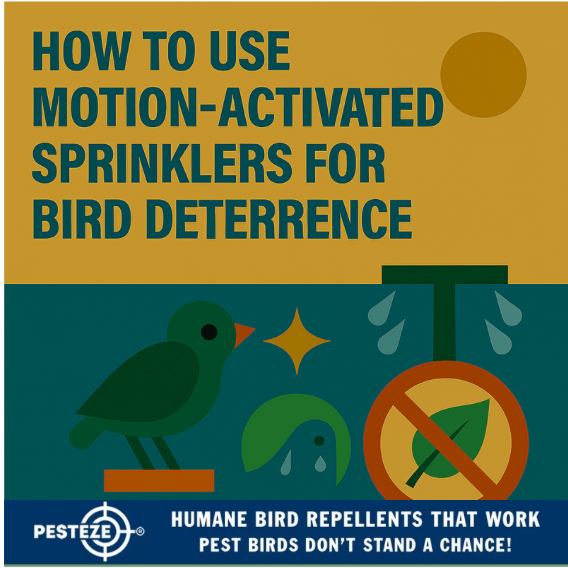HOW TO USE MOTION-ACTIVATED SPRINKLERS FOR BIRD DETERRENCE

HOW TO USE MOTION-ACTIVATED SPRINKLERS FOR BIRD DETERRENCE
SUMMARY
Motion-activated sprinklers offer a humane, effective solution for managing bird populations in residential and commercial environments in 2025.
FEATURES
- Non-Invasive Control: Comprehensive strategies for bird deterrence using water-based technology.
- Property Protection: Methods to prevent bird-related damage to gardens, landscapes, and outdoor spaces.
- Ecological Consideration: Humane approach that deters birds without causing physical harm.
- Technological Innovation: Advanced motion-sensing water deterrent systems.
- Cost-Effective Solution: Affordable method for long-term bird population management.
GUIDE DESCRIPTION
Motion-activated sprinklers represent a sophisticated approach to bird control that leverages technological innovation and natural behavioral deterrence mechanisms. The combination of unexpected water activation and sudden movement creates a powerful psychological barrier for bird populations.
Birds are naturally sensitive to sudden environmental changes, making motion-activated sprinklers an exceptionally effective deterrence method. The unexpected water spray triggers a rapid avoidance response, creating a learning mechanism that discourages repeated visits to protected areas.
Technological innovations in 2025 provide advanced capabilities for motion-activated sprinkler systems. Sophisticated sensor technologies, intelligent tracking mechanisms, and precision water deployment create comprehensive bird management solutions that go beyond traditional deterrence methods.
Professional landscape and property management requires strategic approach to sprinkler-based bird control. Understanding local bird species, their behavioral patterns, and specific environmental characteristics becomes essential for developing effective intervention strategies.
Successful implementation involves careful consideration of multiple factors. Sprinkler placement, sensitivity settings, water pressure, and coverage area all play critical roles in creating effective bird deterrence systems that protect outdoor spaces without causing harm.
Scientific research provides critical insights into bird behavioral responses to motion-activated technologies. Understanding the psychological mechanisms that drive bird avoidance becomes crucial for developing sophisticated, effective wildlife management strategies.
- Pukhraj Sharma


Comments 0